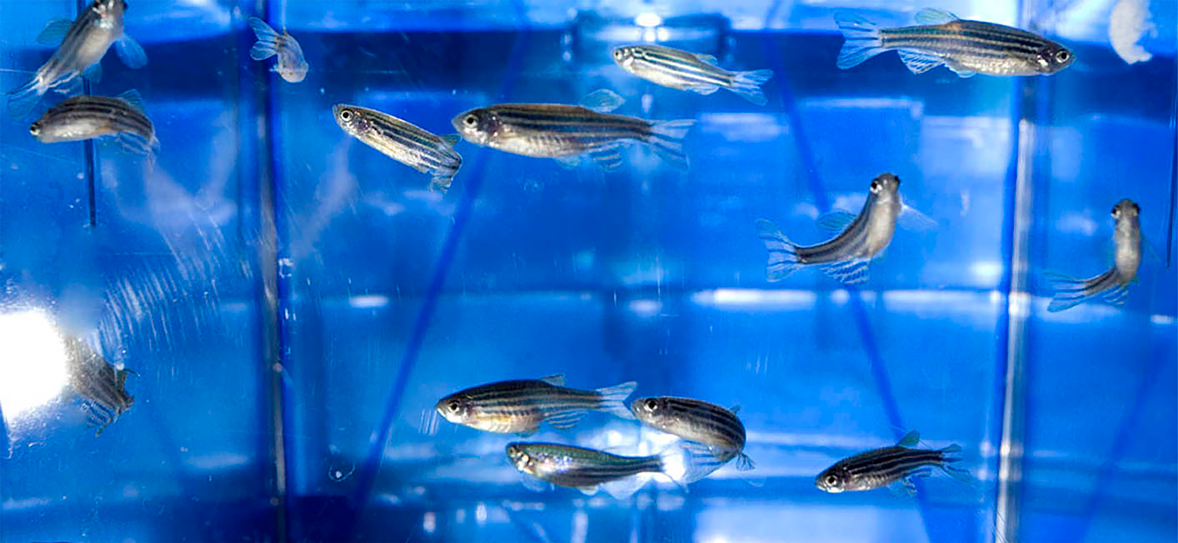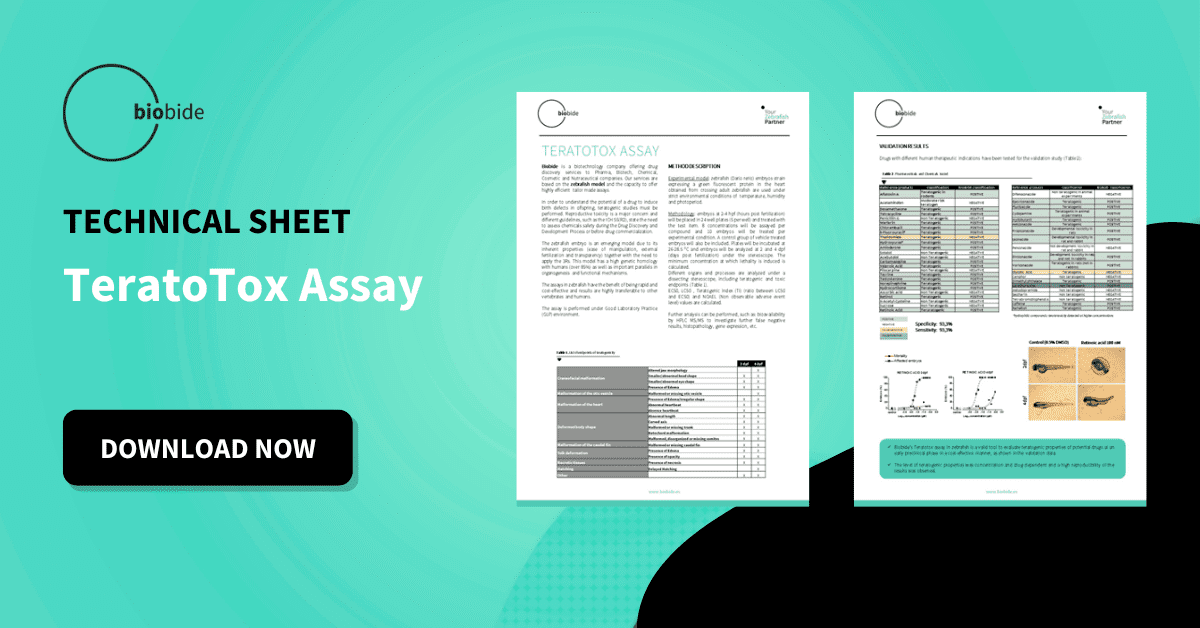Before any drug can be given to a human subject its safety and efficacy must be assessed. The Dose Range Finding (DRF) assay is an important test in preclinical research as it performs an analysis of the tolerable levels of a compound.
Why is Dose Range Finding used in preclinical research?
Dose Range Finding is usually performed at the early stages of clinical research to determine the dose where a compound produces systemic toxic effects on the subject. This dose-response defines the efficacy concentrations of a compound to further investigate more specific and toxic side effects, the efficacy of a compound on humans and the repercussion on environmental health.
The procedure establishes how organs, blood pressure, the heart, and an unborn fetus (among other endpoints) may react to the administration of a compound. Understanding the response at this initial stage saves time and costs in the Early Drug Discovery process.
The value of zebrafish in Dose Range Finding
The zebrafish is a highly suitable alternative model for toxicity screening and its previous DRF to define the concentrations to be tested in the definitive assays, representing an important New Alternative Model (NAM) for the Reduction, Replacement and Refinement of animal experimentation due to its:
- Transparency
- External fertilization
- High fertility
- Ease of husbandry
- Small size
- Cost-effectiveness
- Fewer ethical concerns (while working with embryos

Besides, the zebrafish has a similar genetic structure to that of humans, with its organs replicating human organs. It can produce hundreds of embryos at a time (over 200 eggs every 2-3 days), with most organs being fully developed before 120 hours post fertilization (hpf). This is why the compound exposition has to be done by adding the compound solved in the media (usually water solvent with DMSO) in the well plates. But the concentration to be added is complex to define, as very high concentrations will kill the fish while very low ones won't give any effect.
Therefore DRF is used as a pre-stage to most of the toxicity or efficacy assays, to define the concentration range that would give more accurate results in the subsequent toxicity or efficacy assays to be performed in the zebrafish. We will have an EC50 and/or LC50 value, and we will define the assays below this LC50.
How is Dose Range Finding performed using zebrafish?
Dose Range Finding in zebrafish is usually carried out by the addition of the test compound to the water. The dilutions are varied and must be carefully measured according to OECD (Organisation for Economic Co-operation and Development) Guidelines. The OECD recommends testing and monitoring every 24 hours for up to 96 hours.
Those guidelines also include:
- Number of fish
- Water temperature
- Loading
- Light exposure
- Oxygen concentration
- Avoidance of disturbances
- No feeding
The OECD also states the recommended number of assays to be performed for a true result and how often data should be recorded. This ensures consistency in testing to produce a valid report.
Any changes in the zebrafish embryo, including mortality, are studied to determine the effect of the compound that has been added to the water. Once the test has been completed the OECD guidelines state that the fish used in the assay should be humanely euthanized.
Conclusion
DRF studies are necessary for assessing the lethal concentrations of any drug used for medical purposes, for then being used for testing the specific toxicity and / or efficacy in zebrafish or other models. Thus, speeding up the chemical testing process by using zebrafish will assist, importantly, with Drug Discovery and Development. As it can take an average of 10-12 years to launch a Drug on the market, from conception to approval. Actually, many trials are abandoned in the early stages because of the high risk and cost.
Faster and more cost-effective research using zebrafish can facilitate the whole drug development process, and ensure the safety of Drugs.
Sources
- https://blog.biobide.com/teratogenicity-testing-screening-drugs-for-birth-defects
- https://read.oecd-ilibrary.org/environment/test-no-203-fish-acute-toxicity-test_9789264069961-en#page8
- https://pubmed.ncbi.nlm.nih.gov/3360047/
- https://biobide.com/portfolio/teratotox-assay





